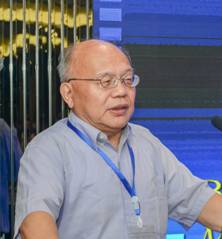 Talk Title:
Talk Title:
An Effective Evaluation Tool for Hyperspectral Target Detection: 3D Receiver Operating Characteristic Curve Analysis
Speaker:
Prof. Chein-I Chang
Abstract:
Receiver operating characteristic (ROC) analysis is performed by a curve, called ROC curve, plotted based on detection probability, P D versus false alarm probability, P F and has been widely used as an evaluation tool for signal detection. Specifically, the area under an ROC curve (AUC) is calculated and used as a detection measure. Unfortunately, finding distributions of P D and P F to generate a continuous ROC curve is practically infeasible. This paper investigates approaches to generating a discrete 2D ROC curve of (P D ,P F )without appealing for probability distributions. Since P D and P F are determined by the same threshold τ τ to specify a detector, an ROC curve of (P D ,P F ) can be only used to evaluate the effectiveness of a detector but not target detectability (TD) and background suppressibility(BS). To address this issue, a 3D ROC curve is generated as a function of (P D ,P F,τ) by introducing the threshold τ τ as a third independent parameter. By virtue of a 3D ROC curve along with its three 2D ROC curves of (P D ,P F ), (P D ,τ τ) and (P F ,τ τ) their AUC values are further used to design new quantitative measures that can be used to evaluate the effectiveness of a detector and its TD and BS. To demonstrate the full utility of 3D ROC analysis in target detection, extensive experiments are performed on two types of targets, prior targets and anomalous targets, to conduct a comprehensive analysis on how to generate discrete 2D ROC curves of (P D ,P F) and use new designed detection measures for target detection performance.
Biography:
Chein-I Chang is a Professor with Department of Computer Science and Electrical Engineering at the University of Maryland, Baltimore County (UMBC) and is currently holding a Chang Jiang Scholar Chair Professorship at Dalian Maritime University awarded by Ministry of Education, China.
Dr, Chang has piublsihed over 175 referred SCI publications including more than 60 journal articles in IEEE Transaction on Geoscience and Remote Sensing and has seven patents with several pending on hyperspectral image processing. He authored three books, Hyperspectral Imaging: Techniques for Spectral Detection and Classification (Kluwer Academic Publishers, 2003), Hyperspectral Data Processing: Algorithm Design and Analysis (Wiley, 2013), Real Time Progressive Hyperspectral Image Processing: Endmember Finding and Anomaly Detection (Springer, 2016) and Real-Time Recursive Hyperspectral Sample and Band Processing: Algorithm Architecture and Implementation, 2017. In addition, He edited two books, Recent Advances in Hyperspectral Signal and Image Processing (Trasworld Research Network, India, 2006) and Hyperspectral Data Exploitation: Theory and Applications (John Wiley & Sons, 2007) and co-edited with A. Plaza a book on High Performance Computing in Remote Sensing (CRC Press, 2007). He has more than 20100 google SCI citation with high index 63.
Dr. Chang has received his Ph.D. in Electrical Engineering from University of Maryland, College Park. He is a Life Fellow of IEEE and SPIE with contributions to hyperspectral image processing.
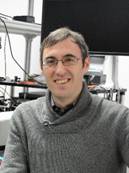 Talk Title:
Talk Title:
Label-Free Nanoscale Imaging and Spectroscopy
Speaker:
Prof. Zachary J Smith
Abstract:
Label free technologies such as phase imaging and Raman spectroscopy can give panoramic views of chemical and morphological features in living systems. Since they avoid the toxicity and bleaching effects of labeled methods, they’re particularly appropriate for studies of dynamic processes in living systems. They also can provide more comprehensive information in studies of emerging biological systems such as extracellular vesicles, where relevant proteins and other label targets are unknown. Here we present our recent results in pushing these methods to the nanometer scale, allowing studies of difficult to probe structures such as the dynamics of the endoplasmic reticulum, and the chemical and structural heterogeneity of individual extracellular vesicles. We will show our new high spatiotemporal resolution phase imaging system that utilizes ultra-oblique illumination to obtain ~250nm spatial resolution and 5ms temporal resolution, allowing label-free observation of vesicle trafficking, mitochondrial fission and fusion, and endoplasmic reticulum dynamics. We will also show a new multimodal Raman tweezers system that characterizes the size, aggregation status, and chemical content of individual biological nanoparticles without labels, showing distinct heterogeneity among vesicles and key chemical differences between vesicles released by cancerous and healthy cells.
Biography:
Zach received his PhD in Optics from the University of Rochester in 2009, studying under Andrew J Berger. From 2009-2015 he was a postdoctoral scholar and project scientist at the Center for Biophotonics at UC Davis, under Sebastian Wachsmann-Hogiu. Since 2015 he has been a professor in the department of Precision Machinery and Precision Instrumentation at the University of Science and Technology of China. His work has been published in Light: Science and Applications, Nature Communications, Analytical Chemistry, Lab on a Chip, and elsewhere. In 2015 he was admitted to the 1000 Young Talents program. His research interests are in label-free imaging and spectroscopy, and photon-based medical devices for low-resource settings.
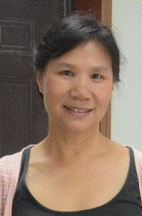
Talk Title:
Effective adaptation to new target data with transfer learning
Speaker:
A/ Prof. Xiuping Jia
Abstract:
The availability of big data in the new digital era, including Earth observation data from rapidly escalating numbers of satellite missions and the wide range of different types of sensors means a huge daily workload for individual data set processing. Traditional machine learning methods use single layer in class modelling, while deep learning techniques automatically learn hierarchical features from the input training data. They require a large quantity of training samples for each classification task to avoid overfitting problem, which is hard to meet in remote sensing application. This leads to a strong need for fast and cost-effective techniques for leveraging the existing classification models and update them to adapt new target data. Transfer learning has been investigated in recent years for this purpose.
In this talk, a general overview of transfer learning will be provided. Two transfer learning methods developed for SVM and deep CNN will be introduced and discussed.
Biography:
Xiuping Jia (M’93–SM’03) received the B. Eng. degree from the Beijing University of Posts and Telecommunications, Beijing, China, in 1982 and the Ph.D. degree in electrical engineering from The University of New South Wales, Australia, in 1996. Since 1988, she has been with the School of Engineering and Information Technology, The University of New South Wales, Canberra, Australia, where she is currently an Associate Professor. Her research interests include remote sensing, machine learning and spatial data analysis. Dr Jia has more than 200 publications, including over 100 papers in leading technical journals. She is the co-author of the remote sensing textbook titled Remote Sensing Digital Image Analysis [Springer-Verlag, 3rd (1999) and 4th (2006) eds.]. She is a Subject Editor for the Journal of Soils and Sediments, and an Associate Editor of the IEEE Transactions on Geoscience and Remote Sensing
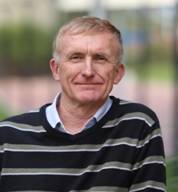 Talk Title:
Talk Title:
Robust Fitting Uniting Max Consensus - Quantum computing, Monotone Boolean functions, hitting sets and independent sets.
Speaker:
Prof. David Suter
Abstract:
Maximum Consensus (MaxCon) is a (robust) fitting criteria that is popular amongst computer vision researchers - it is the basic criterion used in the well known RANSAC algorithm. It is known to be impossible to create efficient solutions for all problem cases, and even hard in some senses to approximate (assuming commonly accepted conjectures such as P is not NP). In this presentation I will outline recent work (with several colleagues) that has advanced our understanding of what can be computed in relation to MaxCon, based on a new way to view the problem theoretically: a setting related to interpretation within the class of Monotone Boolean functions, and thereby related to concepts such as influence, hitting sets, and independent sets. In particular we show the first quantum algorithm that can achieve some speed-up for MaxCon, and a traditional algorithm, (or set of algorithms) based on approximate influence calculation, that can perform competitively with all other approaches, in some sense.
Biography:
DAVID SUTER received the BSc degree in ap plied mathematics and physics from the Flinders University of South Australia, in 1977, the Graduate diploma in computing from the Royal Melbourne Institute of Technology, in 1984, and the PhD degree in computer science from La Trobe University, in 1991. He was a lecturer with La Trobe from 1988 to 1991; and a senior lecturer in 1992, associate professor in 2001, professor from 2006 to 2008 with Monash University, Melbourne, Australia, and professor in the School of Computer Science, University of Adelaide from 2008 to 2018. He also served as Head of School of Computer Science at the University of Adelaide (2009-2014). Currently, he is a research professor in the School of Science, Edith Cowan University, and adjunct professor with the School of Computer Science at the University of Adelaide. He served on the ARC College of Experts from 2008 to 2010. He is currently a member of the editorial board of the journal Pattern Recognition. He has previously served on the editorial boards of the Journal of Machine Vision and Applications, the International Journal of Computer Vision and the Journal of Mathematical Imaging and Vision. He was a general co-chair of ACCV 2002 and ICIP 2013.
 Talk Title:
Talk Title:
Drying kinetics of colloidal droplets: investigation with the rainbow diffractometry and an inverse approach
Speaker:
Prof. Fabrice R.A. ONOFRI
Abstract:
Numerous industrial processes agglomerate, crystalize, oxidize or precipitate suspensions prior to dry and spray them in order to produce nano- to micron-sized powders or deposits with unique properties (catalytic, hardness, specific surface, UV barrier…). Despite these successes, the optimization of spray-drying processes of colloidal suspensions remains a major issue. An upstream optimization requires the development of basic experiments and predictive modeling tools, which can address the multiphysics nature (atomization, heat and-mass-transfer, turbulence, soft matter ...), and the multi-scale aspects (from particle nanopores to the drier decametric dimensions) of the whole spray-drying process.
To the best of my knowledge, all basic experiments on the drying of colloidal droplet are based on the tracking of their size and morphology plus some post-morten analyses (essentially scanning or transmission Electron Microscopy), while there is some evidences that nano or microparticles tend to migrate and agglomerate within an evaporating droplet. To address this problem, it is necessary to probe in-real time the internal structure and not only the external appearance of these droplets.
Following the previous remarks, this talk reports the work in progress to develop an optical method allowing estimating, in the effective medium approximation limits, the radial density in nanoparticles within a spherical droplet. This optical method is based on the principle of the laser diffractometry operating at the rainbow angle, while the droplet under study is trapped into an acoustic field, within a evaporation chamber with controlled temperature and relative humidity. The novelty of the present work lies in the approach to retrieve the density gradients in nanoparticles. It uses an inverse method coupling the predictions of a colloidal droplet evaporation model and electromagnetic calculations based on the Generalized-Mie Theory for Multilayered spheres. This talk summarizes three main contributions:
· Background, hypotheses and limits as well as the implementation schemes of the evaporation and scattering models, the inverse method.
· Numerical study allowing evaluating the stability and accuracy of the inverse method in terms of noise sensitivity, droplet size and density profiles retrieval.
· Complete description of the experimental setup and operating conditions used to compare experimental and numerical results, with conclusions and perspectives.
Biography:
Fabrice Onofri received a PhD (University of Rouen) and a Habilitation (Aix-Marseille University) in Physics. As a CNRS Research Director and the head of the optical research activities of the laboratory IUSTI, his main research activity is focused on the optical & electromagnetic characterization of particle and particle systems. Over the years, his researches have found applications in various fields ranging from aerosols, multiphase flows, suspensions or dusty plasmas in the frame on national and international projects as well as industrial granted projects.
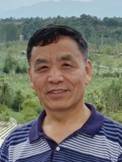 Talk Title:
Talk Title:
Interaction of shaped beams with large objects using VCRM
Speaker:
Prof. Ren Kuanfang
Abstract:
The theoretical and numerical prediction of the physical properties, such as scattering diagrams/patterns, radiation pressure forces, etc. concerning the interaction of light with large objects is necessary in a very vast domain of applications. When the incident light is not a plane wave, or the illumination on the object is not homogeneous, case more realistic, this prediction is more difficult.
The Vectorial Complex Ray Model (VCRM) has been developed to address this problem. In VCRM, the curvature of the wavefront is introduced as a new property of a light ray. This property improves considerably the precision of the ray model (or geometrical optics). The VCRM permits therefore to predict precisely and in fine the scattering diagrams of large objects of any shape with smooth surface. All waves are modelized as rays so it can be applied directly to deal with problems concerning the interaction of shaped beams with large objects.
In this presentation, we will recall the main aspects of VCRM and discuss the theoretical and numerical strategies about how to deal with a shaped beam in the framework of VCRM and how to predict the physical quantities in the interaction of a shaped beam with a large object. Some results will be given for two typical cases (scattering pattern of a real liquid jet illuminated by an elliptical gaussian beam and imaging of a deformed cylinder) to illustrate the method and the variety of its applications.
Biography:
Kuan Fang REN obtained his Bachelor degree in physics from Shaanxi Normal University, Master of Science in radio physics from Xidian University and PhD from Rouen University (France). He is now full professor at Rouen University.
His main interests of research are 1). Theoretical research on the interaction of shaped laser beam and regular shaped particles, 2). Development of optical techniques for measurement of small particles and its application in the fluid mechanics and combustion. 3). Theoretical prediction of radiation pressure and torque exerted on a particle by a laser beam. 4). Development of a new model – Vectorial Complex Ray Model (VCRM) – for describing the scattering of an object of arbitrary shape and a wave. He has published 100 papers in the scientific journals and 125 communications in national and international conferences.
See his personal pages for more information:
中文: http://web.xidian.edu.cn/kfren/
English: http://www.coria.fr/spip.php?auteur970/
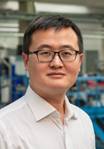 Talk Title:
Talk Title:
Flame spray pyrolysis for synthesizing functional nanoparticles: optical measurements on single isolated droplet combustion
Speaker:
Dr. Li Haipeng
Abstract:
Flame spray pyrolysis (FSP) is a promising and versatile technique for the fast production of various functional nanoparticles. During FSP, small droplets evaporate and release precursors into the flame where they get oxidized to form nanoparticle. To obtain fundamental insights into the mechanisms of droplet combustion in FSP, especially the heat and mass transfer, single droplet combustion is applied with optical measurement techniques.
The evolutions of rainbow signals of burning single-component droplets have been studied with standard rainbow refractometry. It indicates that temperature gradients exist inside the burning single-component droplets with the initial diameters from 85 to 142 µm, and temperature gradients cause rainbow positions increase first to the peak and then decrease. Micro-explosions occur for single burning droplets containing metal-organic compounds, and these micro-explosions will largely increase the rate of precursor release and decrease the life-time of burning droplets. In order to find a better understanding of droplet micro-explosions, single droplet combustion of Tin(II)2-ethylhexanoate (Tin-ETH) dissolved into xylene were performed by using the optical measurement techniques of shadowgraphy, interferometric particle imaging and standard rainbow refractometry. The results demonstrate that droplet micro-explosions need less time with the increase of the precursor concentration. Moreover, the evolutions of rainbow positions of burning droplets are strongly affected by the precursor concentration, which could be caused by the preferentially evaporation and shell formation before micro-explosions. Comparing to that of single-component droplets, new findings of the rainbow positions of burning droplets with micro-explosions can have be obtained. The rainbow positions will show one period of a long-time increase and subsequent a short-time decrease before the occurrence of micro-explosions.
Digital in-line holography measurements were performed on single droplet combustion. The influence of the surrounding flame on hologram signals are identified: The refractive index gradient surrounding the burning droplet causes the hologram central fringe bright. This new experimental finding can be used to estimate the refractive index gradient surrounding the droplet with the help of a multilayered model and Mie-scattering theories.
Biography:
Postdoctoral research assistant, Master of materials science, Member of the Combustion Institute (German Section). Mr. Haipeng Li did his PhD study (2014-2020) at Leibniz Institute for Materials Engineering IWT and Faculty of Production Engineering, University of Bremen, Germany. His research background and interest focus on functional nanoparticle synthesis via single and double flame spray pyrolysis (FSP), as well as studying droplet combustion and explosion using optical diagnostic techniques, including shadowgraphy (high-speed camera recording and backlight), rainbow refractometry, interferometric particle imaging, and digital in-line holography. Mr. Li has published 7 first-author papers and 7 co-author papers in the international journals including Combustion and Flame, Proceedings of the Combustion Institute, Journal of Quantitative Spectroscopy and Radiative Transfer, ACS Applied Nano Materials, ACS Applied Materials & Interfaces, and Experimental Thermal and Fluid Science.
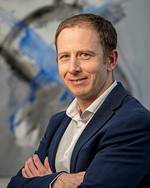 Talk Title:
Talk Title:
Quantitative phase imaging: Concept and Techniques
Speaker:
Dr. Daniel Claus
Abstract:
Quantitative phase imaging has become increasingly important in optical metrology and medical imaging. It enables the measurement of the topography and the visualization of transparent thin biological tissue sections, which
are generally transparent and so do not show high amplitude contrast in a conventional optical microscope. It is therefore not easy to visualise such tissues unless a staining process is applied, which may harm or even destroy the natural morphological features and behavior of the tissue. Moreover, the phase data is quantitative, which enables objective evaluation of the sample supporting tissue discrimination. A large number of quantitative phase imaging techniques have been developed in the last couple of years. After a brief overview and comparison of the different techniques, we will talk about ptychography in more detail. Ptychography has attracted large attention in the last couple of years due to its versatile imaging capabilities caused by the huge amount of information rich data recorded. It could be demonstrated that it can be applied in transmission and reflection mode. Moreover, it offers superresolved images, speckle free incoherent imaging quality, 3D depth sectioning, information multiplexing. It has been demonstrated with coherent light sources of the entire range of the electro-magnetic spectrum and even in the presence of partially coherent light.
Biography:
Daniel Claus studied Precision Engineering at the University of Ilmenau. In 2010, he received his Ph.D. from the University of Warwick, UK. He worked as a postdoc at the University of Sheffield and at the University of Stuttgart (ITO). Since 2017, he is head of the optical metrology group at the Institut für Lasertechnologien in der Medizin und Meßtechnik, Ulm. His main research interests are quantitative phase imaging and chromatic confocal imaging
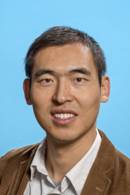 Talk Title:
Talk Title:
Cryogenic Super-resolution Microscopy: The Cold STORM
Speaker:
Dr. Lin Wang
Abstract:
Super-resolution microscopy has revolutionised the way we understand biology. Among these methods, Stochastic Optical Reconstruction Microscopy (STORM) is particularly interesting, becuase it provides macromolecular level resolving power as well as quantitative protein information. A significant question lying ahead is: can we push the resolution of STORM even further to somewhere close to electron microscopy? To address this question, we developed STORM under cryogenic conditions that enables genuine nanometre scale resolving power. We are aiming at transforming STORM to become a powerful structural biology tool, and facilitating information-rich correlative light and electron microscopy.
Biography:
Lin obtained his PhD degree in Electrical and Electronic Engineering under the supervision of Professor Mike Somekh FREng at the University of Nottingham, UK in 2010. During his PhD study, Lin developed a wide-field microscopic technique to obtain sub-100 nm resolution by combining Solid Immersion Lens and Structured Illumination Microscopy. Since then, he became specialised in the area of developing optical microscopy gaining spatial resolution beyond the classic diffraction limit, i.e. super-resolution microscopy. He subsequently joined the research group headed by Professor Neil Hunter FRS at the University of Sheffield, UK as a Post-doctoral Research Fellow. In this role, he developed and applied a variety of super-resolution microscopy and other functional biological imaging techniques to characterise the structure and function of biological photosynthetic membranes and light-harvesting protein complexes. At the end of 2015, he was appointed permanent Staff Scientist at Central Laser Facility, Science and Technology Facilities Council, UK Research and Innovation. His role is to lead the user operation programme in the area of super-resolution microscopy, and to develop novel microscopy techniques for biological imaging. His research is funded by STFC, BBSRC, MRC and industry. Lin is currently an Honorary Assistant Professor in the School of Biosciences at the University of Nottingham.
 Talk Title:
Talk Title:
THz; You have to Innovate if you want to be Innovative!
Speaker:
Prof. Harvey N Rutt
Fellow of the Royal Academy of Engineering, Fellow of the Institute of Physics, Fellow of the Optical Society of America, and Fellow of the IET, and is Editor in Chief of the Elsevier Journal Infrared Physics and technology
Abstract:
In recent years terahertz (THz) research has become a very ‘hot topic’, with a rapid rise in publications and a number of start-up companies and dedicated research groups. This talk first of all describes the general physics of THz radiation and its interaction with matter. It then considers how these can be applied in real-world applications, and to what extent expectations of the field are in conflict with the real physics involved. To be truly ‘innovative’, it is no longer sufficient just to ‘work on THz’; you need new, innovative and realisable ideas on how to utilise its unique properties.
Biography:
Prof Harvey Rutt took his first degree in Electronics at Southampton University, gaining first class honours and the Zepler prize. Continuing at Southampton he completed his PhD on Proustite Parametric Oscillators, laying the basis for a career largely spent on research in the infrared spectral region. On completing his doctorate three years were spent in Brazil at the Federal University of Rio Grande do Sul in Porto Alegre, establishing a laser research group. On returning to the UK he joined the UKAEA Culham Laboratory, initially working on novel lasers for isotope separation. Ultimately he became Division Head of Beam Science and Technology, with some 70 staff, covering a wide range of infrared and visible lasers but also particle beams for fusion plasma heating. In 1992 Prof Rutt returned to the University of Southampton as Rank Professor of Infrared Science and technology, researching a range of infrared sources and systems. In 2006 he took over as Head of the School of Electronics and Computer Science and was responsible for the rebuilding and equipping of the large cleanroom facility after a major fire. His research interests expanded into the THz region. Although now retired, he retains active research collaborations both locally and in Australia, Japan and China. In his private life Prof Rutt is a qualified pilot of light aircraft and a novice glider pilot. He likes to travel – especially to live volcanos!, is a keen SCUBA diver, hikes, kayaks, until recently rode horses, and has a strong interest in alpine plants and natural history.
Prof Rutt is a Fellow of the Royal Academy of Engineering, the Institute of Physics, the Optical Society of America, and the IET, and is Editor in Chief of the Elsevier Journal Infrared Physics and technology.
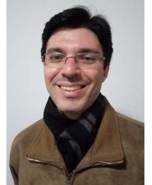
Talk Title:
Incorporating the GLMT Framework into Photophoresis: Why and How?
Speaker:
Prof. Leonardo André Ambrosio, University of São Paulo, Brazil
Abstract:
In this talk, I present practical motivations for the use of the generalized Lorenz-Mie theory (GLMT) into photophoresis for the calculation of radiometric forces over micron-sized spherical particles. To do so, the physical mechanisms behind particle displacement with the aid of photophoretic forces are presented together with applications, especially in the field of optical trap displays. Then, after a review of the GLMT, I delineate a step by step, first-attempt approach for the theoretical incorporation of arbitrary-shaped beams into photophoresis of homogeneous particles with an arbitrary index of refraction.
Biography:
Leonardo A. Ambrosio received the B.Sc., M.Sc. and the Ph.D. degree in Electrical Engineering from University of Campinas, School of Electrical and Computer Engineering, Campinas, Brazil, in 2002, 2005 and 2009, respectively. Between 2009 and 2013 he was a postdoctoral Fellow with the Department of Microwaves and Optics at the School of Electrical and Computer Engineering, University of Campinas (Unicamp), and developed part of his research at the University of Pennsylvania, Philadelphia, USA. He is now Professor Doctor at the University of São Paulo, in Brazil, the most prestigious and renowned university in Brazil and South America, with the Department of Electrical and Computer Engineering of the São Carlos School of Engineering. His research interests include Photonics, light-scattering problems for optical trapping and manipulation, metamaterials and plasmonics for optical nano-circuits and microstructured light fields and modeling of non-diffracting beams envisioning applications in biomedical optics, telecommunications and atom guiding.
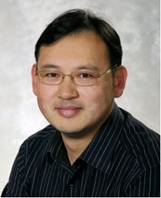 Talk Title:
Talk Title:
Attention Models in Hyperspectral Image Processing
Speaker:
A/Prof. Zhou Jun
Abstract:
Attention models have been widely used in computer vision for object detection and image classification. When it comes to hyperspectral image processing, the attention can be defined in both spatial and spectral dimensions. Besides classic attention models, the development of deep learning brings new opportunities to research on this topic. They allow important information be extracted from salient regions and important spectral bands on the image. This talk introduces the recent development on hyperspectral attention models and their applications in remote sensing, computer vision and microscopic imaging settings.
Biography:
Jun Zhou received the B.S. degree in computer science and the B.E. degree in international business from Nanjing University of Science and Technology, Nanjing, China, in 1996 and 1998, respectively. He received the M.S. degree in computer science from Concordia University, Montreal, Canada, in 2002, and the Ph.D. degree from the University of Alberta, Edmonton, Canada, in 2006. He is an associate professor in the School of Information and Communication Technology at Griffith University, Nathan, Australia. Previously, he had been a research fellow in the Research School of Computer Science at the Australian National University, Canberra, Australia, and a researcher in the Canberra Research Laboratory, NICTA, Australia. His research interests include pattern recognition, computer vision and spectral imaging with their applications to remote sensing and environmental informatics.
 Talk Title:
Talk Title:
Limited Data and Interpretability of Medical Image Analysis: The Challenge of Chance
Speaker:
Dr. Gu Lin
Abstract:
Though deep learning has shown successful performance in the medical image analysis in the tasks of classifying the label and severity stage of certain disease. However, the CNN based methods suffer the bottleneck of lacking training label and interpretability. For example, most of them give few evidence on how to make prediction. To make it worse, the ubiquitous adversarial attack has posed even more serious challenge on its real application. This talk would introduce the recent progress for these challenges on various medical image domains.
Biography:
Dr. Lin Gu obtained the Ph.D from the Australian National University in Australia in 2014 and worked as a postdoctoral fellow at A*STAR in Singapore from 2014 to 2016. From 2016 to 2019, he was a project researcher in the National Institute of Informatics in Japan and also as a guest researcher at Kyoto University. In 2020, he joins the RIKEN AIP, Japan as a research scientist and also serves as guest researcher at Tokyo University. Dr. Gu's research direction includes both machine learning and its applications in medical imaging and computational photography. At present, he has published several papers in PR, TIP, TMI and ICCV, CVPR, MICCAI. He was awarded the best student paper Award by the International Pattern Recognition Society and the Australian Pattern Recognition Society respectively.
Talk Title:
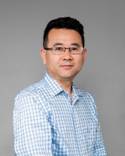 Thermosensitive polymer dots nanocomposites for trimodal CT/photoacoustic fluorescence imaging guided synergistic chemo-photothermal therapy
Thermosensitive polymer dots nanocomposites for trimodal CT/photoacoustic fluorescence imaging guided synergistic chemo-photothermal therapy
Speaker:
A/Prof. Yuan Zhen
Abstract:
Precision delivery of theranostic agents to tumor site is essential for improving its diagnostic and therapeutic efficacy and concurrently minimizing the adverse effect during treatment. In this study, we propose a unique concept of near-infrared (NIR) light activation of conjugated polymer dots (Pdots) at thermosensitive hydrogel nanostructures for multimodal imaging-guided synergistic chemo-photothermal therapy. Interestingly, due to the high photothermal conversion efficiency of Pdots, the Pdots@hydrogel as theranostic agents is able to undergo controllable softening and molten states under NIR laser irradiation, leading to a controllable light-triggered drug release and hydrogel degradation. Besides, the novel Pdots@hydrogel nanoplatform can serve as the theranostic agent for enhanced trimodal computed tomography (CT)/photoacoustic (PA)/fluorescence (FL) imaging-guided synergistic chemo-photothermal cancer therapy. More importantly, the constructed intelligent nanocomposite Pdots@hydrogel exhibits excellent biodegradability, strong near-infrared absorption, bright CT/PA/FL signals, and superior tumor ablation effect. Therefore, the concept of a light-controlled multifunctional Pdots@hydrogel that integrates multiple diagnostic/therapeutic modalities into one nanoplatform, can potentially be applied as a smart nanotheranostic agent to various perspectives of personalized nanomedicine.
Biography:
Dr. Zhen Yuan is an associate professor with the Faculty of Health Sciences at University of Macau (UM). Before joined UM, he had worked as an assistant professor with the Arizona State University and research assistant professor in Biomedical Engineering Dept. with the University of Florida. His academic investigation is focused on optical molecular imaging and cancer theranostics, and neuroimaging and neuroscience. He has achieved national and international recognition through more than 200 SCI publications in high ranked journals in his field such as advanced Functional Materials, Nano Letters, ACS Nano, Biomaterials, Chemical Science, Angewandte Chemie International Edition, Theranostics, ACS Appl. Mater. Interfaces, Optics Letters, Optics Express, and Applied Physics Letters. He is the editorial board member of Quantitative Imaging in Medicine and Surgery, associate editor of BMC Medical Imaging, and associate editor of Frontiers in Human Neuroscience. He is a senior member of OSA and senior member of SPIE.
 Talk Title:
Talk Title:
Towards optical Omics platform for cell science and biomarkers discovery
Speaker:
Prof. Artem Pliss
Abstract:
While development of Omics disciplines (e.g. proteomics, lipidomics) has revolutionized current biomedical research, the future trend is aimed at analysis and monitoring the molecular content of live organelles in their subcellular environment. Nevertheless, the capability for subcellular molecular analysis has not been developed yet, despite a strong demand in the field. Towards this goal we initiated development of two complementary optical modalities: (i) Raman spectrometry and (ii) Fluorescence Lifetime Imaging (FLIM) for non-invasive characterization of the molecular content in live cell organelles. In the first case, we introduce the concept of a Raman-Omics approach, which categorizes the entire molecular diversity of a sample in about a dozen of general classes and subclasses of biomolecules and quantifies their weights in the single cellular organelles. In the second approach, we developed a FLIM approach for monitoring of proteins agglomeration in organelle-like structures in the cell interior. Synergic applications of FLIM and Raman techniques elucidate the link between dynamic transformations of cellular structure and cellular regulation and disease development as well as have a breakthrough potential for biomarkers discovery.
Biography:
Artem Pliss earned his Ph.D. in Cell Biology from Charles University, Prague, Czech Republic. Currently, he is a Research Associate Professor in University at Buffalo, State University of New York. He works on development and applications of advanced bioimaging tools for cell science and translational medicine. In particular, he has spearheaded development of fluorescence lifetime imaging and vibrational spectroscopy approaches for molecular analysis of single organelles in live cells. These studies have advanced understanding of cellular physiologic regulation, development of diseases and mechanisms of pharmaceutical drugs action. Overall, he co-authored 60 articles in the area of advanced bioimaging and biomedical sciences.
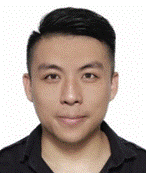 Talk Title:
Talk Title:
Far Field Wireless Power Transfer Enabled By Ultra-Compact Electrically Small Rectennas
Speaker:
Dr. LIN Wei
Abstract:
Far field wireless power transfer (WPT) enabled Internet-of-Things (IoT) applications are the emerging technology and the future trend along with the rapid development of 5G IoT ecosystems. WPT-enabled IoT devices enjoy many advantages as battery-free, environmental-friendly, capable of operating in remote places without manual maintenance. As the IoT devices will be embedded into more compact and smaller platforms, to reduce the size of the rectenna becomes a major challenge. Although extensive research works related to compact rectennas have been reported, it is difficult to achieve ultra-compact size, low cost, excellent wireless power capture capability, high AC to DC conversion efficiency at the same time. Moreover, far-field WPT-enabled IoT sensors have rarely been studied. In this talk, several metamaterial-inspired electrically small rectennas with distinct wireless power capture capacities will be introduced. Based on the developed ultra-compact rectennas, two WPT-enabled light and temperature sensor systems have been successfully built and tested. A video demo of the prototyped system will be presented at the end of this talk.
Biography:
Wei LIN (S’13-M’16-SM’19) received his PhD degree in Electronic Engineering from City University of Hong Kong, Hong Kong SAR in August 2016. He received the Master and Bachelor degrees, both in Electronic Engineering, at the South China University of Technology, Guangzhou, China in July 2012 and July 2009, respectively. He worked as a Research Associate at the Nanyang Technological University, Singapore from August 2012 to August 2013 and as a Postdoc Research Associate at University of Technology Sydney, Australia from October 2016 to September 2018. His research interests include the designs of circularly polarized antennas, electrically small antennas, reconfigurable antennas, HF antennas, satellite antennas, millimeter wave antennas, wireless power transfer, terahertz devices, and their applications.
Dr. Lin is currently a Chancellor's Postdoctoral Research Fellow with the Global Big Data Technologies Centre, School of Electrical and Data Engineering, University of Technology Sydney, Ultimo NSW, Australia. Dr. Lin received many academic awards, which mainly include the 2019 IEEE AP-Society Raj Mittra Travel Grant; the Best Paper Award (First Prize) at the International Symposium on Antennas and Propagation (ISAP 2018); the Best Young Professional Paper Award (First prize) at the 3rd Australian Microwave Symposium (AMS2018); the Best Poster Paper Award at the 2nd international conference on Electromagnetic Materials and Technologies for the Future (EM-MTF2017); a Talent Development Scholarship from the Hong Kong Government; and the Young Scientist Award at the IEEE Region 10 conference (TENCON2015). Dr. Lin was the recipient of the 2018 UTS Early Career Researcher Grant Award and 2019 UTS Chancellor's Postdoctoral Research Fellowship. He serves as reviewers for several IEEE and IET journals. He is organizing a Special Section “Advanced Antenna Technologies for 5G Internet-of-Things Applications” in IEEE Open Journal of Antennas and Propagation (OJAP) as the Lead Guest Editor. He received the Outstanding Reviewer Award for IEEE Antennas and Wireless Propagation Letters in July 2018 and Top 100 reviewers for IEEE Transactions on Antennas and Propagation in 2020.
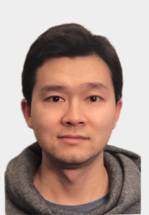 Talk Title:
Talk Title:
Machine Learning on Mothers’ and Babies’ Health in Electronic Health Record
Speaker:
Dr. Cheng Gao
Abstract:
In this presentation, we will introduce how machine learning are applied to improving mothers’ and babies’ health using the data from electronic health record (EHR). First, a machine learning based framework is introduced to automatically identify severe maternal morbidity (SMM) and its relevant risk factors. We evaluate the framework with EHR data from 45,858 deliveries at a large academic medical center. We show that the framework outperforms a state-of-the-art model from the U.S. Centers for Disease Control and Prevention (AUC of 0.94 vs. 0.80). The framework specifically improves upon PPV by 59% (CDC: 0.22 vs. our model: 0.35). In the process, we discovered novel SMM indicators (e.g., disorders of fluid or electrolytes, systemic inflammatory response syndrome, and acidosis). Second, we build a framework that incorporates deep learning and word embedding to predict neonatal encephalopathy (NE) before childbirth. The framework is evaluated with 104 NE and 31,054 non-NE newborns in a large academic medical center. We designed 12 predictive models and the best model achieved an AUC of 0.93.
Biography:
Cheng Gao is a postdoctoral research fellow at Vanderbilt University Medical Center (VUMC). His research interest is building predictive models to improve patients’ outcomes via machine learning and data mining in electronic health record. Prior to joining VUMC, he conducted research on finding endmembers in hyperspectral images.
 Talk Title:
Talk Title:
Watching ripples on solids
Speaker:
Prof. Oliver B. Wright
Abstract:
Surface-acoustic and bulk-acoustic-wave wave devices based on waves in resonators have found extensive application in high-frequency signal processing. In particular phononic crystals, metamaterials and micron to sub-micron structures exhibit interesting physical properties, such as omnidirectional stop bands or tight wave confinement, that allow potential improvements to these devices. Here we present results of real-time imaging and tracking of optically-induced vibrations at frequencies from 100 MHz up to ~1 GHz in various novel micron-scale cavity geometries: phononic-crystal slab cavity structures, metamaterial extraordinary-transmission structures, planar circular structures.
Biography:
Oliver B. Wright received his B.A. in physics at University College, Oxford and his Ph.D. in low-temperature solid-state physics at the Cavendish Laboratory, Cambridge. In 1982 he continued this research at CRTBT, C.N.R.S. in Grenoble, France. In 1984 he joined Schlumberger to work on optical sensors in Montrouge, Paris. In 1986 he moved to Nippon Steel Corporation, working as a Senior Researcher at their Electronics Research Laboratories, Sagamihara, Japan, mainly in the field of non-destructive characterization of materials using laser acoustic techniques and electromagnetic acoustic transducers. In 1994 he worked on related topics at C.N.R. Istituto di Acustica in Rome and in 1995 at C.N.R.S. in Besançon, France. Since 1996 he has been working as a professor in the Faculty of Engineering at Hokkaido University in Sapporo, Japan, specializing in particular on laser picosecond ultrasonics, surface acoustic wave imaging and acoustic metamaterials. In 2013 he founded the company Plum Science that makes novel waveguide-based desk lights and stand lights, on sale in many countries.
http://kino-ap.eng.hokudai.ac.jp
https://plumscience.com
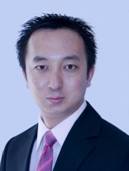 Talk Title:
Talk Title:
Millimetre-wave Antennas and System for 5G and Beyond
Speaker:
Prof. Gao Yue
Abstract:
This research emphasises on the design of antennas and arrays for future wireless communications. Future wireless systems and 5G technologies are expected to achieve 1000 times overall system capacity, ten times data rate, higher average cell throughput, at least 10 times spectral, and several times lower latency. The proposed antennas in this work have high gain, wide bandwidth and high efficiency. Furthermore, a design methodology and prototypes of multiple single element antenna, MIMO antennas and large-scale antenna array for 5G communication systems are presented. The proposed antennas and arrays work on several frequency bands with special focus on the potential 5G prominent 28 GHz band which is selected based on recent 5G standardisation. This talk also presents the performance of several metallization techniques that can be an alternative of electro-less plating for 3D printed antenna applications. The proposed techniques reduce the complexity and cost of the fabrication process of the 3D printed antennas at X-band and Ka-band. The system performance with the National Instrument software defined millimetre-wave transience system at 28GHz will be presented.
Biography:
Yue Gao (S’03–M’07–SM’13) is a Professor and Chair in Wireless Communications at Institute for Communication Systems, University of Surrey, United Kingdom. He received the Ph.D. degree from the Queen Mary University of London (QMUL), U.K., in 2007. He is the Head of Antennas and Signal Processing Lab and developing fundamental research into practice in the interdisciplinary area of smart antennas, signal processing, spectrum sharing, millimetre-wave and Internet of Things technologies in mobile and satellite systems. He has published over 200 peer-reviewed journal and conference papers, 3 patents, 1 book and 5 book chapters and 3 best paper awards. He is an Engineering and Physical Sciences Research Council Fellow from 2018 to 2023. He was a co-recipient of the EU Horizon Prize Award on Collaborative Spectrum Sharing in 2016. He served as the Signal Processing for Communications Symposium Co-Chair for IEEE ICCC 2016, the Publicity Co-Chair for the IEEE GLOBECOM 2016, the Cognitive Radio Symposium Co-Chair for the IEEE GLOBECOM 2017, and the General Chair of the IEEE WoWMoM and iWEM 2017. He is the Chair of the IEEE Technical Committee on Cognitive Networks and the IEEE Distinguished Lecturer of the Vehicular Technology Society. He is an Editor for the IEEE INTERNET OF THINGS JOURNAL, IEEE TRANSACTIONS ON VEHICULAR TECHNOLOGY and IEEE TRANSACTIONS ON COGNITIVE NETWORKS.
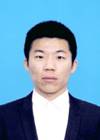 Talk Title:
Talk Title:
Research on Phased Array Antennas with Wide-Angle Scanning Capability
Speaker:
Dr. Guangwei Yang
Abstract:
With the rapid development of electronic technology, phased array antennas have been applied many fields, such as radar, satellite communications, astronomy and meteorology, air traffic, earth detection, space exploration, remote sensing mapping, driverless, and biomedicine, especially 5G communications. The multi-domain requirements of phased array antennas have led to increasingly higher performance requirements for phased array antennas, such as multifunction, low cost, and fast and flexible changes in beams, especially wider beam scanning coverage. Therefore, the issue of wide-angle scanning of phased array antennas has become a hotspot and main topic for global researchers and scholars. This research mainly introduces some methods to improve the wide-angle scanning capability of the phased array and our work for realizing this capability.
Biography:
Guang-Wei Yang (S’15-M’19) received the B.E., M.S., and PhD. Degrees all in Electronic Engineering in Northwestern Polytechnial University in 2012, 2015, 2019, respectively. From 2019 to 2020, he was the Postdoc in the Antenna, Propagation and Millimeter-wave Systems (APMS) Section, Aalborg University, Denmark. He is currently working toward the Newton International Fellow in the School of Electronic Engineering and Computer Science, Queen Mary University of London, UK. He has coauthored over 25 articles in well-reputed international journals. He also serves as a reviewer for all the IEEE and IET journals related to antennas. His recent research interests include wideband antennas, wide beam antennas, millimeter-wave array antennas, circularly-polarized antennas, base station antennas, phased array antennas, reconfigurable antennas, scanning antenna and EM Periodic Structure.
 Talk Title:
Talk Title:
Advanced antennas for small satellites
Speaker:
IEEE Fellow, Prof. Steven Gao (高式昌)
Abstract:
Internet of Space (IOS) refers to a fully integrated system including hundreds of thousands of small satellites in the low earth orbit (LEO), numerous unmanned aerial vehicles (UAV), airplanes and other mobile terminals in the air, as well as billions of mobile terminals on the ground (cars, ships, mobile phones, laptops...). IOS is the new frontier of research for researchers in fields of antennas and propagation, spacecraft system engineering, satellite communications systems, wireless networks and computer science. This talk will explain the antenna technologies for small satellites networks in future IOS. High-speed wireless connections amongst all mobile terminals in space, air and on the ground is critical for IOS. Antennas are the key technology for achieving high-speed wireless connections amongst small satellites and also between small satellite and other terminals in the air and/or on the ground in future IOS. A review of recent development in advanced antennas for small satellites will be presented.
Biography:
Steven Gao is IEEE Fellow, Chair Professor of RF and Microwave Engineering, and the Director of Post-graduate Research at the University of Kent, UK.
He worked as a Post-doctoral Research Fellow at National University of Singapore (Singapore), a Research Fellow at Birmingham University (UK), a Visiting Research Scientist at Swiss Federal Institute of Technology (ETH Zurich, Switzerland), a Visiting Fellow at Chiba University (Japan), a Visiting Scientist at University of California at Santa Barbara (US), and a Senior Lecturer, Reader and Head of Antenna and Microwave Group at Northumbria University (UK), and Head of Satellite Antennas and RF System Group at Surrey Space Centre, University of Surrey (UK). He joined Kent as a Professor in Jan. 2013.
Prof. Gao is an Associate Editor of IEEE Transactions on Antennas and Propagation, IEEE Access, Radio Science and IET Circuits, Devices and Systems, and the Editor-in-Chief for Wiley Book Series on "Microwave and Wireless Technologies". He was a Distinguished Lecturer of IEEE Antennas and Propagation Society (2014-2016), General Chair of 2013 Loughborough Antennas and Propagation Conference, Guest Editor of IEEE Trans on Antennas and Propagation for Special Issue on "Antennas for Satellite Communications"(2015), and is a member of the editorial boards of International Journal of Space Science and Engineering, Chinese Journal of Electronics (China), etc. He gave invited talks at many international conferences (e.g., Plenary Speaker at AES'2014, Invited Speaker at iWAT 2017, IEEE APWC 2017, UCMMT 2017, APCAP 2014, etc). He is a Fellow of IET, UK, and a Fellow of Royal Aeronautical Society.
He published 2 books (<<Space Antenna Handbook>>, Wiley, 2012; <<Circularly Polarized Antennas>>, Wiley-IEEE, 2014), >300 papers and several patents. He received the 2016 IET Premium Award for the Best Paper in IET Microwave, Antennas and Propagation. His main areas of expertise are in antennas, smart antennas, phased arrays, MIMO, satellite antenna, RF/microwave/millimetre-wave/THz circuits and RF front ends (high-efficiency RF/microwave power amplifiers, filters), satellite communications, mobile communications, wireless power transfer, UWB radars, passive radars, synthetic-aperture radars, remote sensing, electromagnetic modelling and small satellites.


